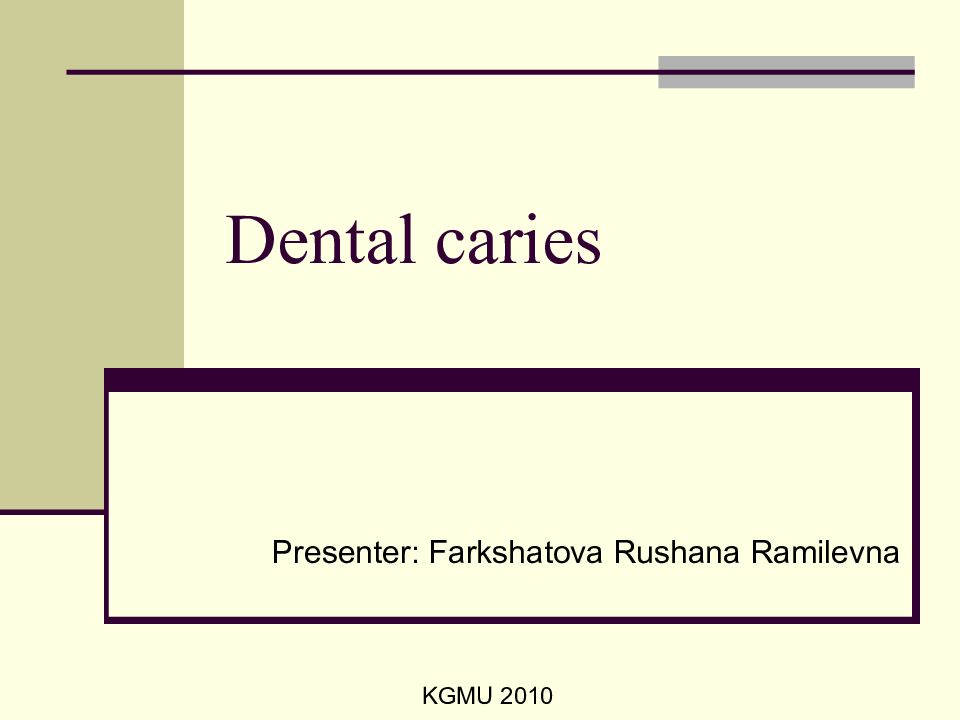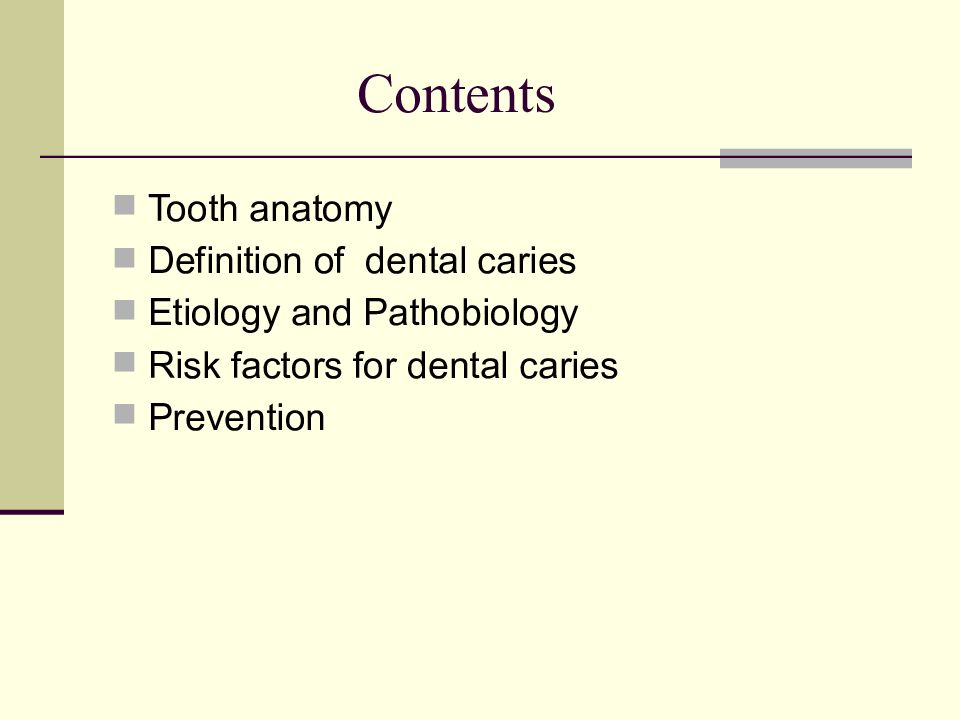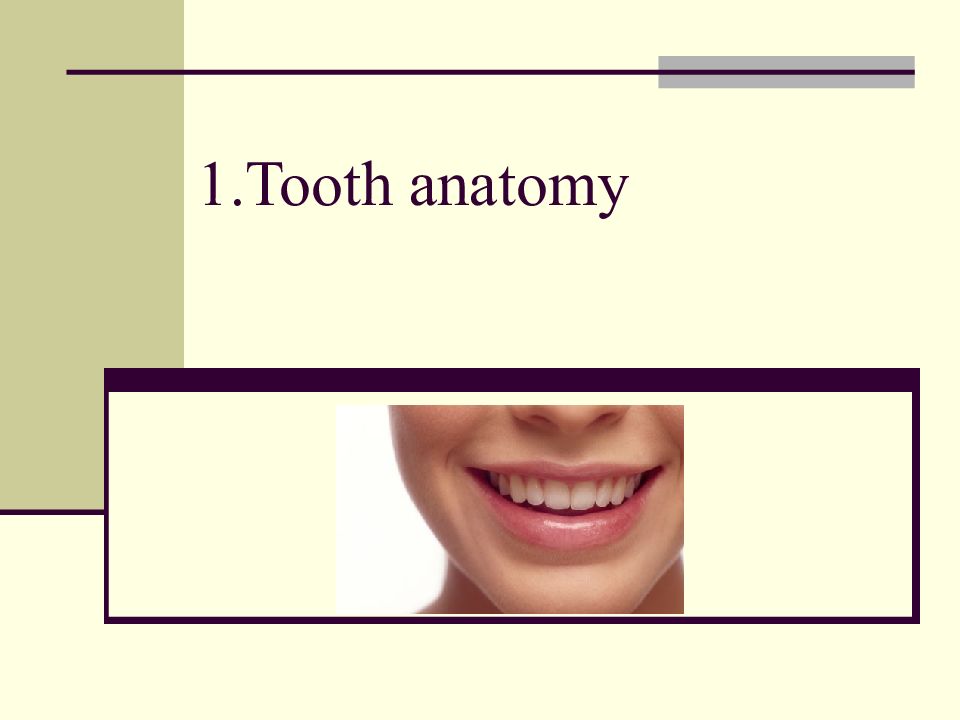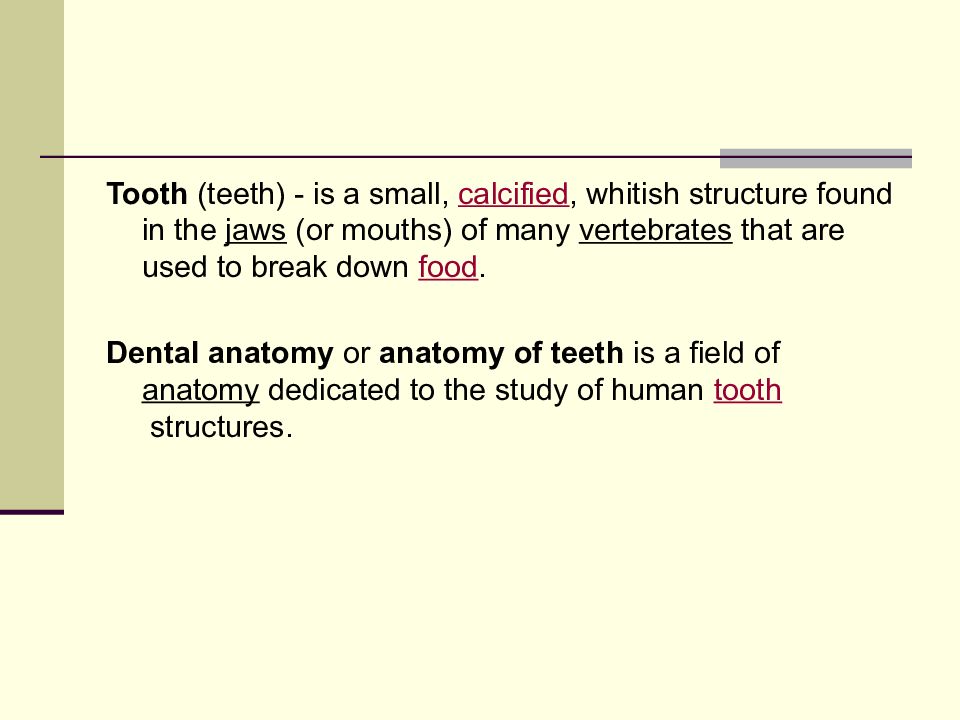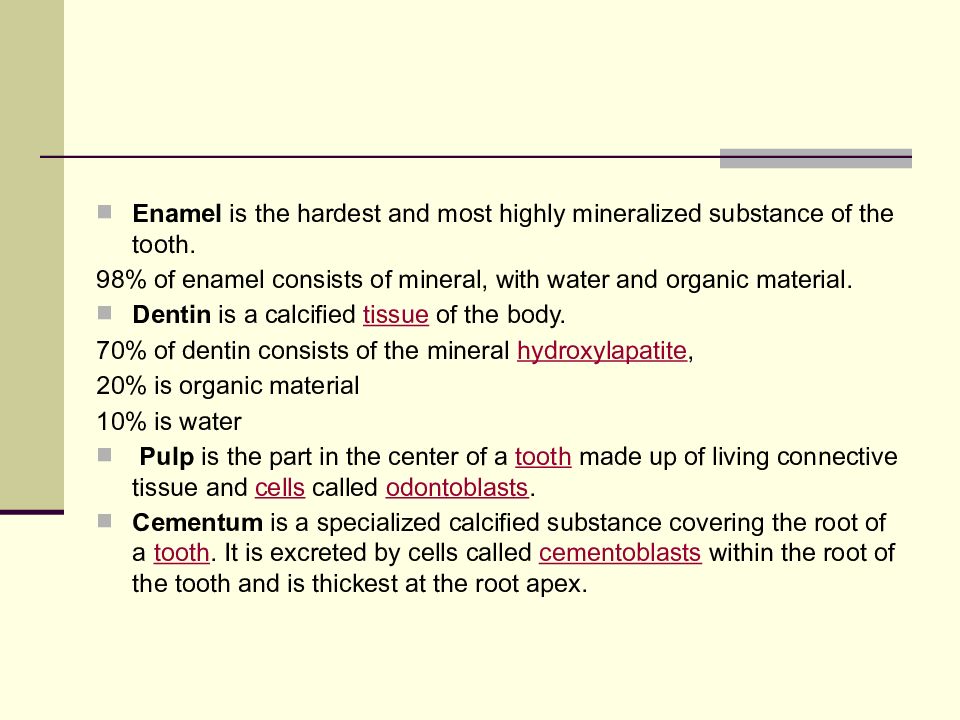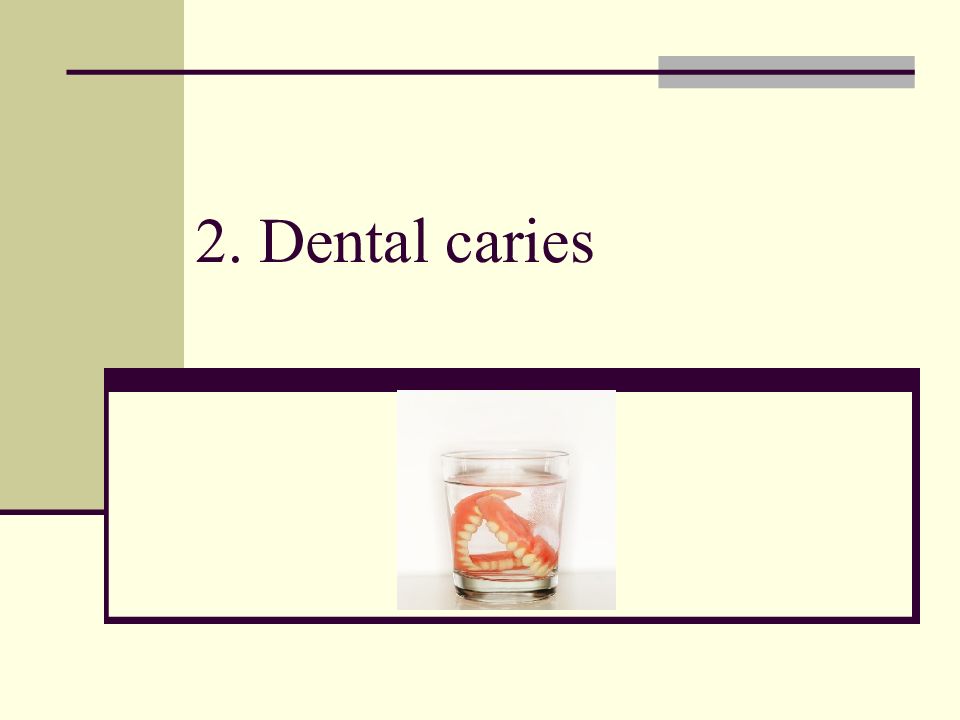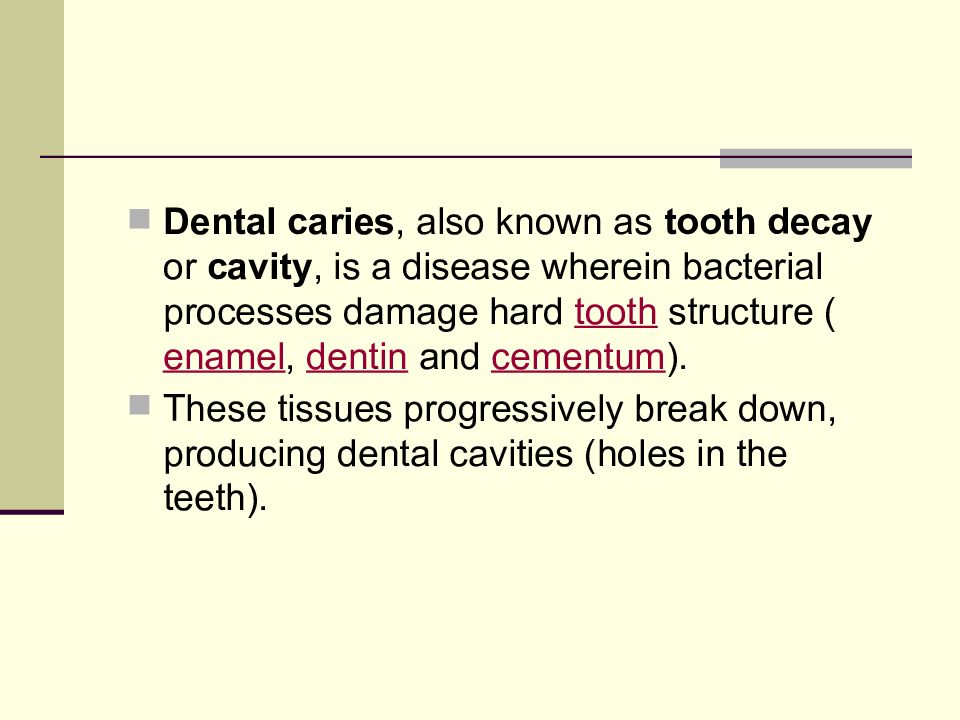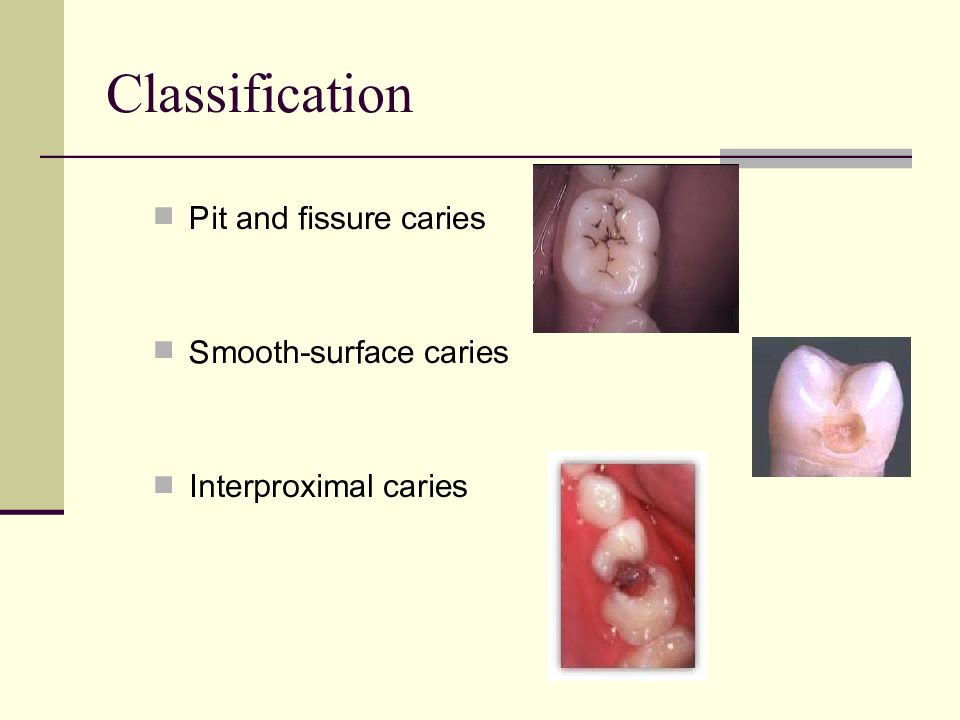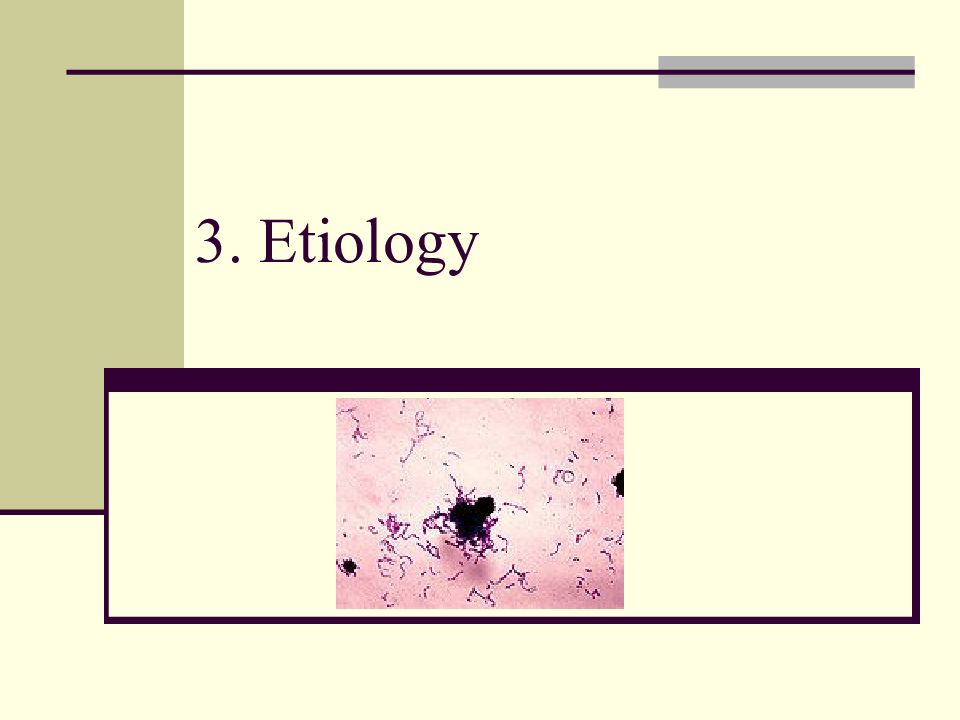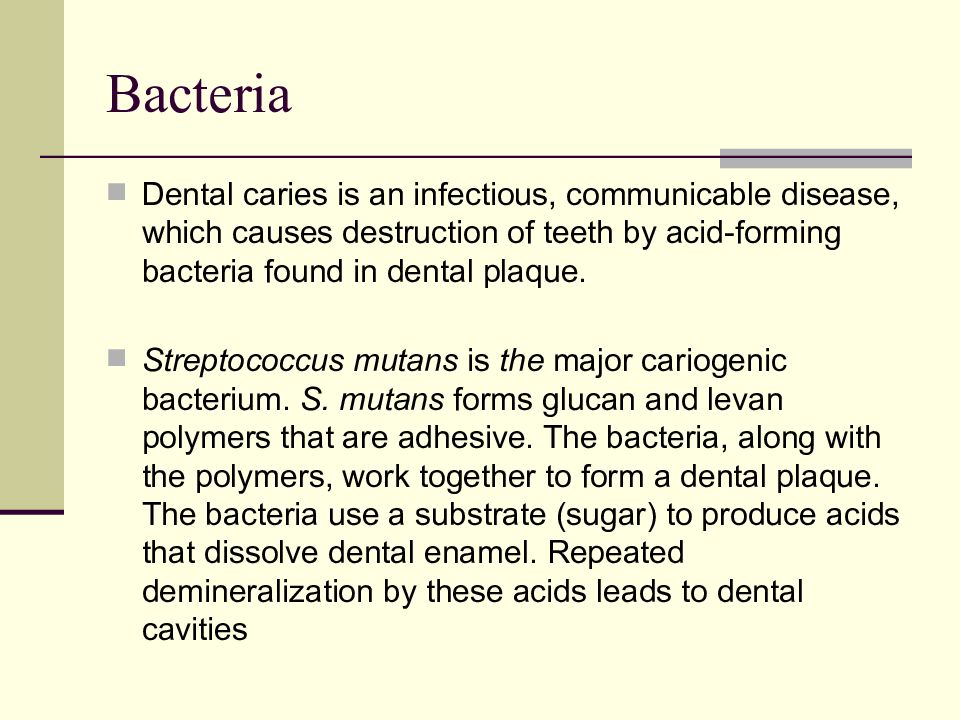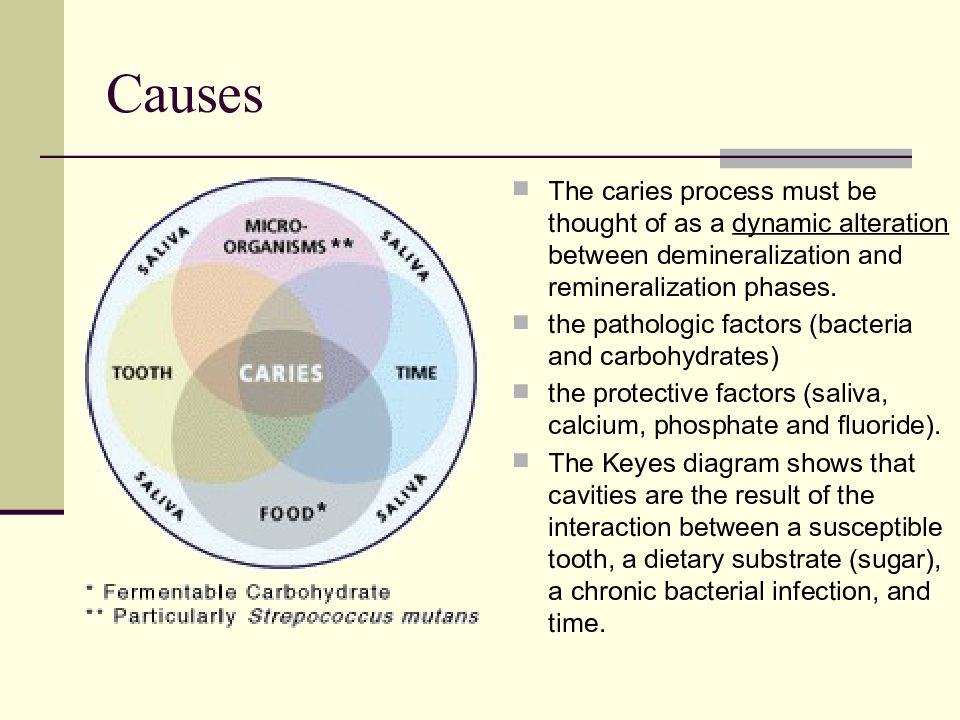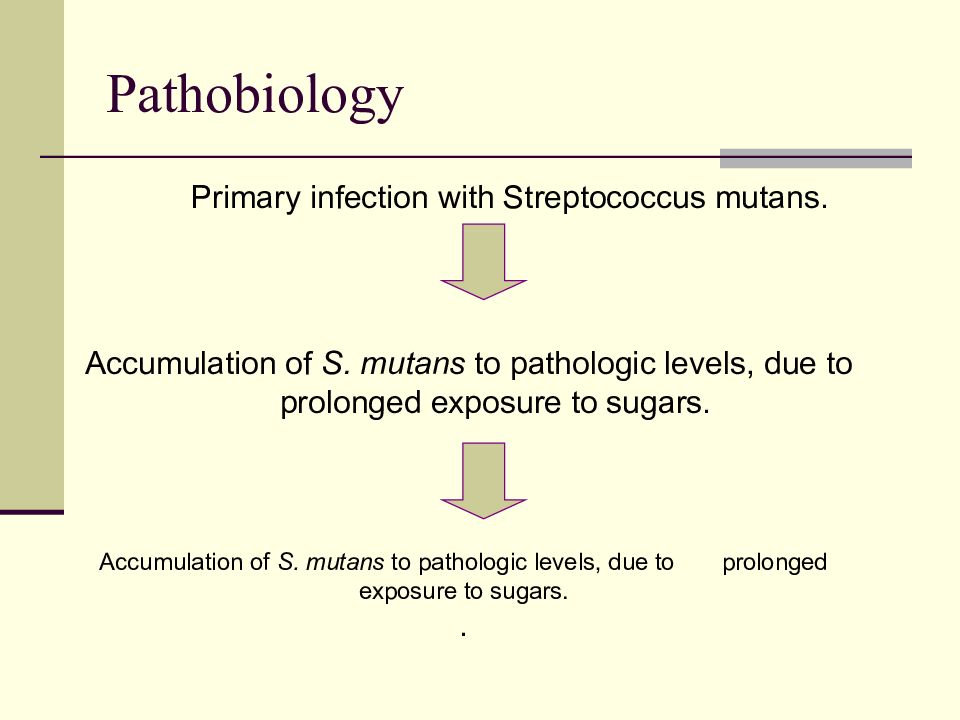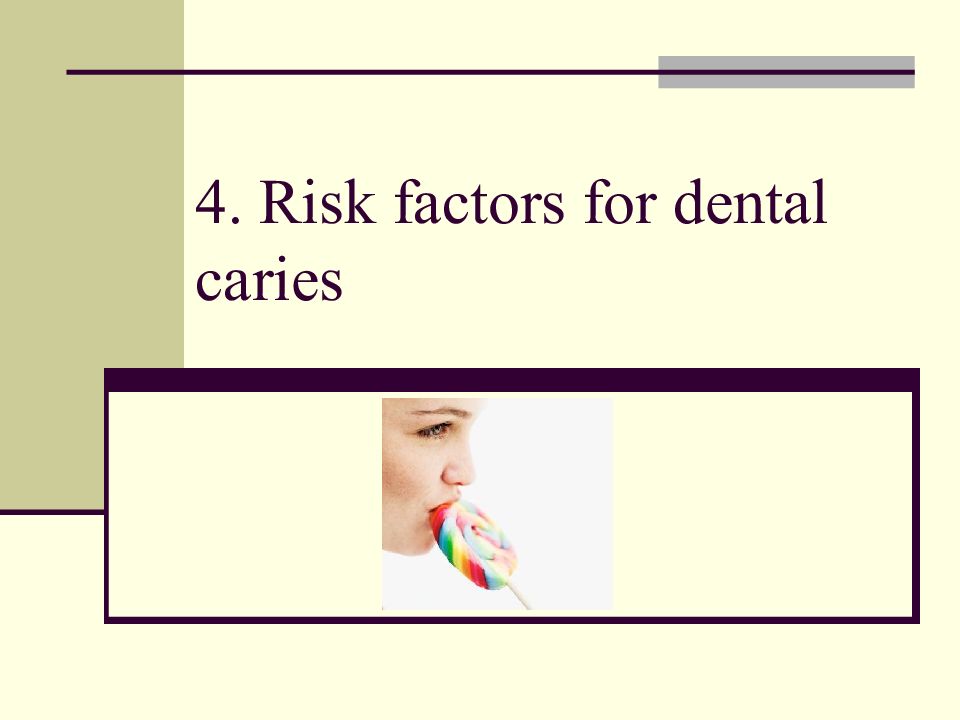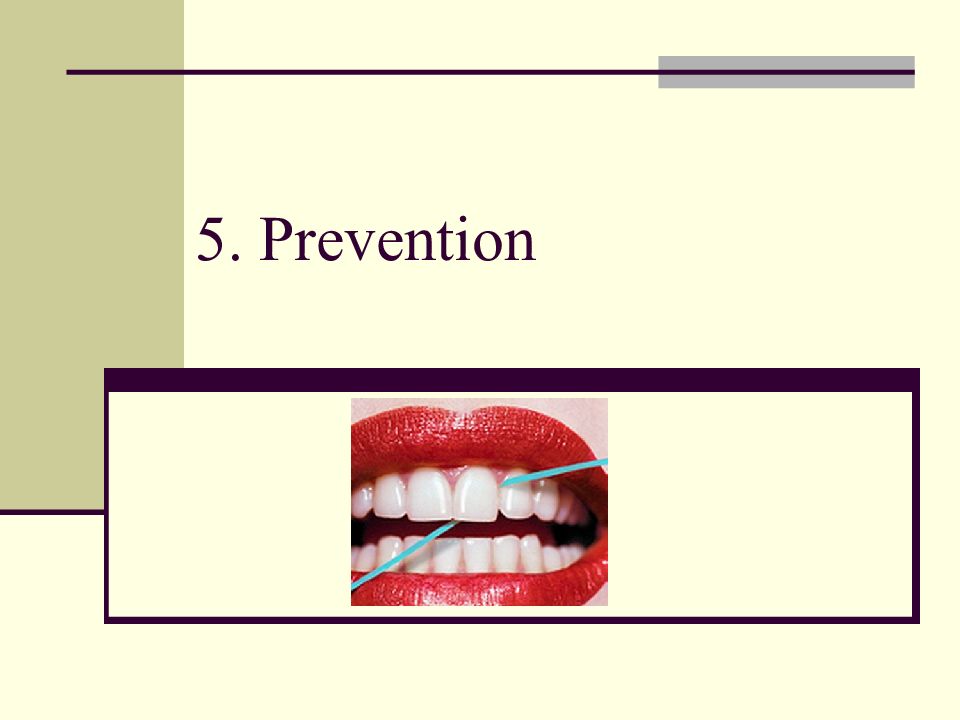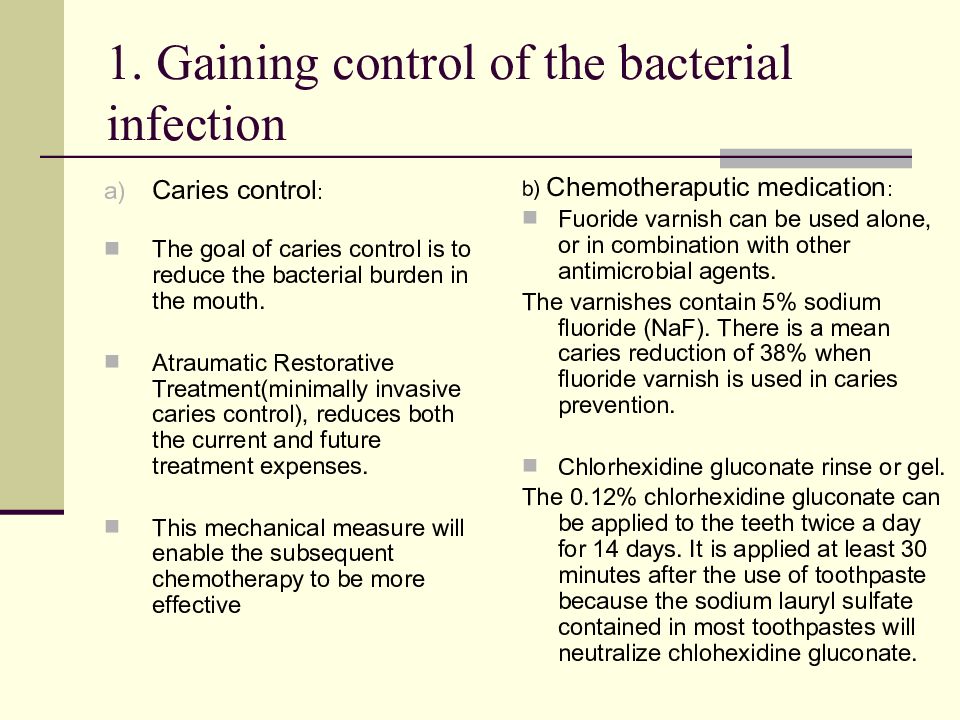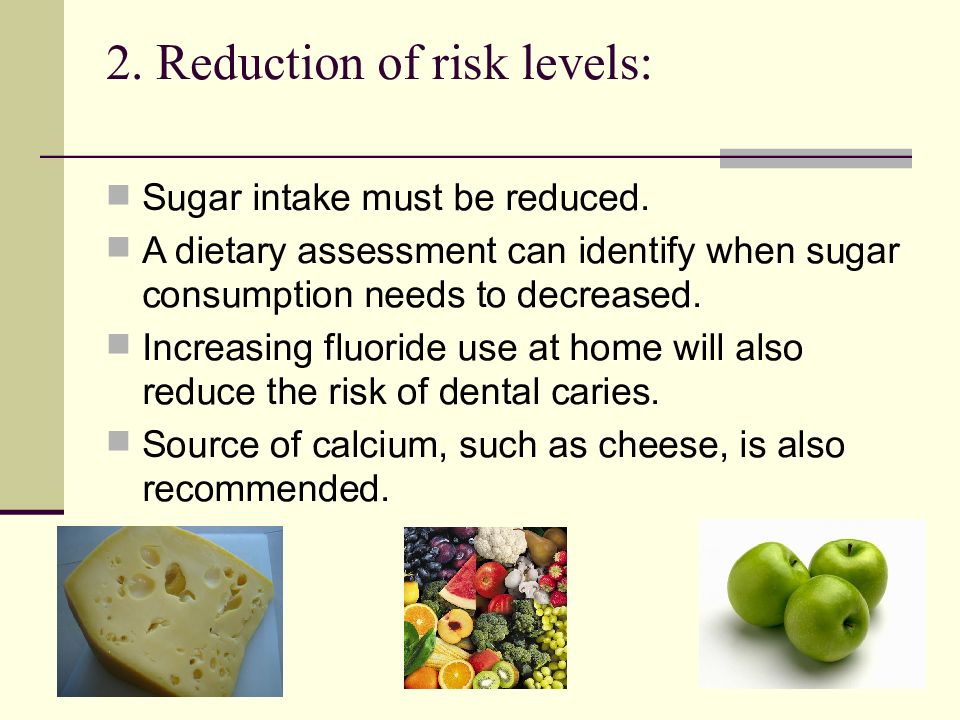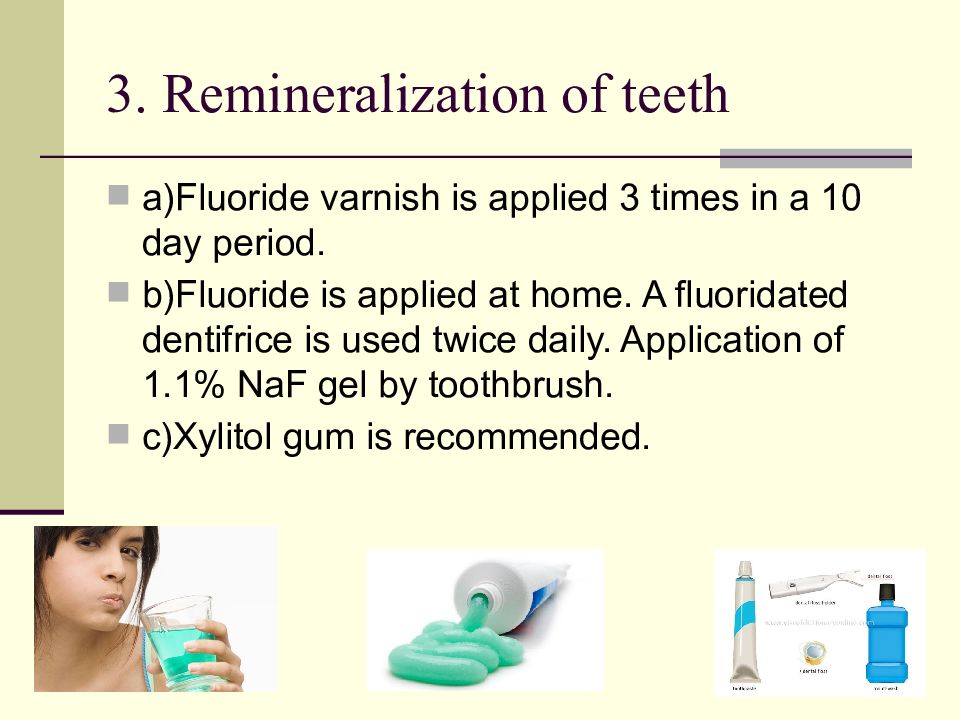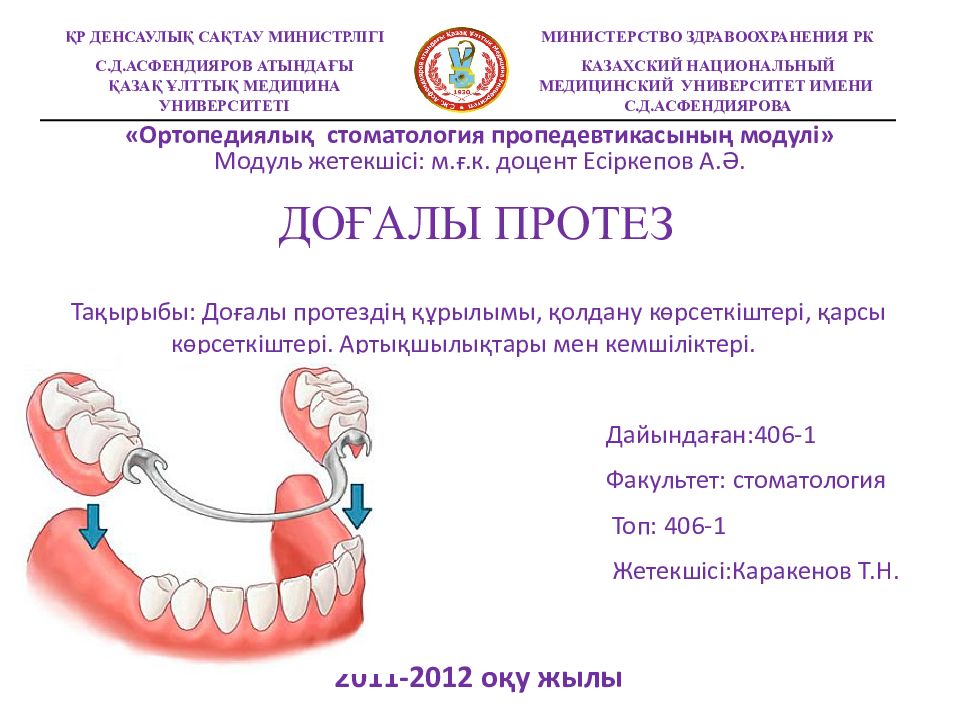Первый слайд презентации: Dental caries
Presenter: Farkshatova Rushana Ramilevna KGMU 2010
Слайд 2: Contents
Tooth anatomy Definition of dental caries Etiology and Pathobiology Risk factors for dental caries Prevention
Слайд 4
T oo th ( teeth ) - is a small, calcified, whitish structure found in the jaws (or mouths) of many vertebrates that are used to break down food. Dental anatomy or anatomy of teeth is a field of anatomy dedicated to the study of human tooth structures.
Слайд 5: Tooth structure
Слайд 6
E namel is the hardest and most highly mineralized substance of the tooth. 98% of enamel consists of mineral, with water and organic materia l. Dentin is a calcified tissue of the body. 70% of dentin consists of the mineral hydroxylapatite, 20% is organic material 10% is water P ulp is the part in the center of a tooth made up of living connective tissue and cells called odontoblasts. Cementum is a specialized calcified substance covering the root of a tooth. It is excreted by cells called cementoblasts within the root of the tooth and is thickest at the root apex.
Слайд 8
Dental caries, also known as tooth decay or cavity, is a disease wherein bacterial processes damage hard tooth structure ( enamel, dentin and cementum ). These tissues progressively break down, producing dental cavities (holes in the teeth).
Слайд 9: Classification
Pit and fissure caries Smooth-surface caries Interproximal caries
Слайд 12: Bacteria
Dental caries is an infectious, communicable disease, which causes destruction of teeth by acid-forming bacteria found in dental plaque. Streptococcus mutans is the major cariogenic bacterium. S. mutans forms glucan and levan polymers that are adhesive. The bacteria, along with the polymers, work together to form a dental plaque. The bacteria use a substrate (sugar) to produce acids that dissolve dental enamel. Repeated demineralization by these acids leads to dental cavities
Слайд 13: Causes
The caries process must be thought of as a dynamic alteration between demineralization and remineralization phases. the pathologic factors (bacteria and carbohydrates) the protective factors (saliva, calcium, phosphate and fluoride). The Keyes diagram shows that cavities are the result of the interaction between a susceptible tooth, a dietary substrate (sugar), a chronic bacterial infection, and time.
Слайд 14: Pathobiology
Primary infection with Streptococcus mutans. A ccumulation of S. mutans to pathologic levels, due to prolonged exposure to sugars. A ccumulation of S. mutans to pathologic levels, due to prolonged exposure to sugars. .
Слайд 16
Frequent intake of carbohydrate-rich or sugary foods enables the cariogenic bacteria to maintain a low pH on the surfaces of the teeth. People who already have one or more dental cavities are considered high risk for developing more. A low fluoride level on the surface of the teeth reduces the remineralization process and increases the risk for caries. When the saliva flow is below 0.7 ml/minute, the saliva cannot wash carbohydrates off the dental surface. In addition, low salivary buffering capacity, IgA, calcium, and phosphate reduce the potential for neutralization of acids in the dental plaque. A low socio - economic status can reduce interest in oral hygiene and a healthy diet.
Caries control : The goal of caries control is to reduce the bacterial burden in the mouth. Atraumatic Restorative Treatment (m inimally invasive caries control ), reduces both the current and future treatment expenses. This mechanical measure will enable the subsequent chemotherapy to be more effective b) Chemotheraputic medication : Fuoride varnish can be used alone, or in combination with other antimicrobial agents. The varnishes contain 5% sodium fluoride (NaF). There is a mean caries reduction of 38% when fluoride varnish is used in caries prevention. C hlorhexidine gluconate rinse or gel. The 0.12% chlorhexidine gluconate can be applied to the teeth twice a day for 14 days. It is applied at least 30 minutes after the use of toothpaste because the sodium lauryl sulfate contained in most toothpastes will neutralize chlohexidine gluconate.
Слайд 19: 2. Reduction of risk levels:
S ugar intake must be reduced. A dietary assessment can identify when sugar consumption needs to decreased. Increasing fluoride use at home will also reduce the risk of dental caries. S ource of calcium, such as cheese, is also recommended.
Слайд 20: 3. Remineralization of teeth
a)Fluoride varnish is applied 3 times in a 10 day period. b)Fluoride is applied at home. A fluoridated dentifrice is used twice daily. Application of 1.1% NaF gel by toothbrush. c)Xylitol gum is recommended.
